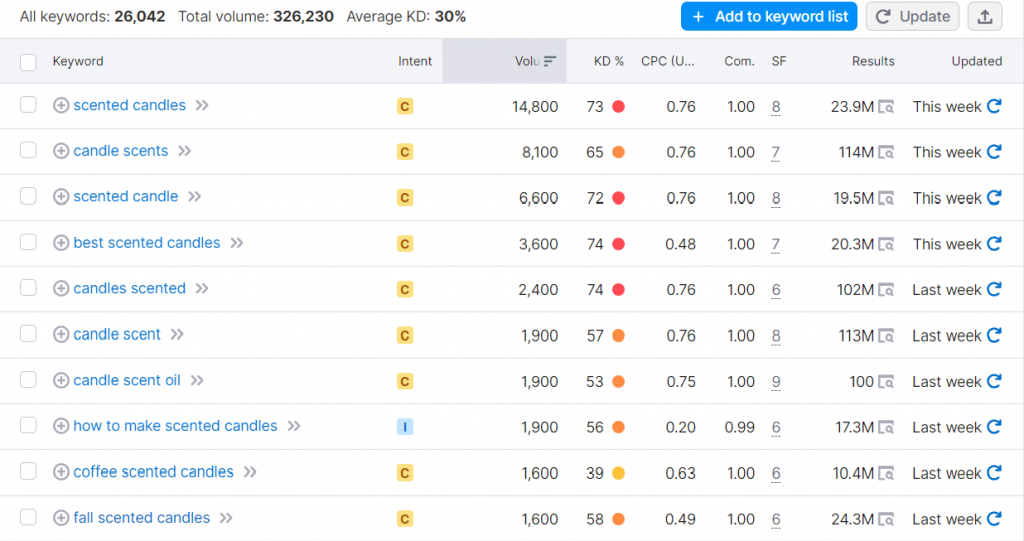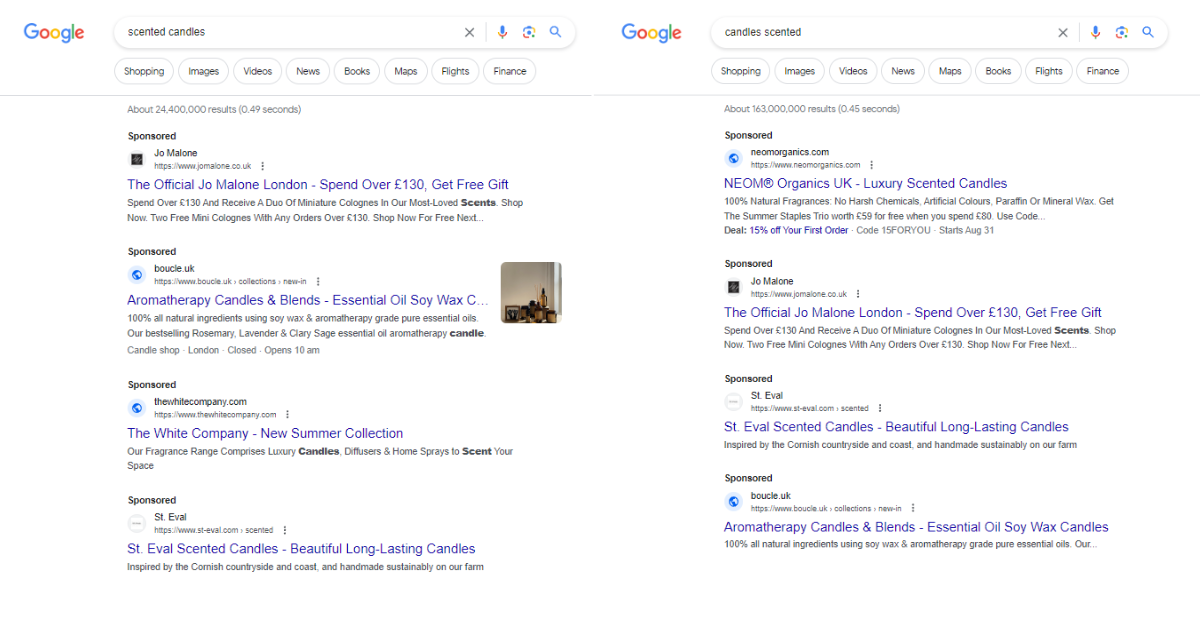

What Is Keyword Clustering and How Can It Help Your Business?
Written By Otilia Crizbasan | 19 June, 2023
How to level up your SEO game with keyword clustering
Hey there, SEO explorers! Ever feel like you’re missing a secret ingredient in your SEO recipe? We might just have the answer for you: keyword clustering.
When it comes to crafting website content, you’re usually faced with two keyword challenges: ‘When to create separate pages for each keyword and when you should group them together?’ and ‘Which related keywords should you include with each topic?’
In this blog, we’re going to chat all about keyword clustering. We’ll break it down, show you how it works, and give you the insights to put it into action.
What is keyword clustering?
In our last article, we took a deep dive into the world of keywords and now it’s time to go even deeper.
Keyword clustering (or keyword grouping) is kind of like throwing a themed party. You gather keywords that share a common vibe, or in this case, meaning. It’s very important in the SEO world because it helps us create top-notch, authoritative content on our chosen topics.
The central concept of keyword clustering revolves around the fact that certain keywords are best suited within the same content piece, while others, despite their relatedness, are more appropriate in different content.
In the initial stages of SEO, keyword grouping was manually conducted through endless Excel sheets. But modern automated tools have made this process significantly quicker and more efficient, accomplishing in minutes what previously took hours.
What are some benefits?
By harnessing the power of keyword clustering, you’re opening the doors to a world of opportunities in the digital landscape. Here’s a handy rundown of the key benefits that this approach brings to your table.
Whether it’s boosting your search engine performance or gaining sharper insights into your audience, keyword clustering can be a transformative asset to your business:
- Improved SEO: Keyword grouping helps improve the visibility of your website on search engines. By grouping related keywords, you can optimise your content to rank higher in search engine results pages (SERPs).
- Better content organisation: It helps to structure and organise your content more efficiently. By grouping keywords, you can create content that covers a specific topic comprehensively.
- Enhanced user experience: By using keyword groups, you can create more relevant and targeted content, leading to a better user experience. It also helps users find the information they’re looking for more easily.
- Effective PPC Campaigns: In Pay-Per-Click campaigns, keyword clustering can improve ad relevance, Quality Score, and Click-Through Rate (CTR). This leads to more effective ads and potentially lower costs.
- Better analytics and insights: Grouping keywords makes it easier to analyse the performance of your keywords. You can identify which groups are performing well, which aren’t, and adjust your strategy accordingly.
When to create separate pages for each keyword?
When should we dedicate a separate page for each of these keywords? Here are a few criteria to take into account when deciding whether to create a distinct page for a keyword.
- Sufficient keyword volume
Volume is a significant factor in determining whether a keyword deserves its own page. If a keyword has a high search volume, it suggests that a considerable number of users are specifically interested in that topic. Creating a separate page for such a keyword can help capture this traffic and meet the user’s search intent directly.
However, it’s also crucial to balance search volume with competitiveness. A high-volume keyword with fierce competition might not yield the expected traffic. Especially if your website doesn’t yet have the authority to rank high for it.

- Separate topic
Some closely related keywords might refer to the same topic. In the past, it was possible to create separate pages for each variation of a related topic and still achieve favourable rankings on Google.
However, Google has become much more intelligent in grouping keyword intent. And thanks to advancements in Natural Language Processing (NLP), search engines now have a better understanding of natural human language than ever before.
Let’s see this example:
- Scented candles
- Candle scented
To confirm their semantic connection, a simple Google search can be conducted to see how much overlap exists in the ranking results for both keywords.

If the same set of URLs appears for both keywords, it indicates that Google considers these two keywords synonymous enough to be grouped together as semantically connected keywords.
- Does it make sense?
You are the one that knows the subject matter the best. Ask yourself: would it make sense from a user’s perspective to find separate pages for these keywords? If a user types in a specific keyword, would they expect to land on a page solely dedicated to that topic, or would they anticipate broader content?
You don’t have to follow the crowd. While Google search results provide valuable insights into people’s search preferences, it’s perfectly acceptable to carve your own path.
How do I create a keyword group?
When it comes to planning your content, it’s clear that starting with your main keyword is crucial. However, it’s also beneficial to have a list of 5 to 20 related keywords that can help you expand and enhance your content.
But with a potentially extensive list of semantic keywords to choose from, how do you determine which ones are the most important and relevant?
Selecting the most vital phrases requires thoughtful consideration. Factors such as their relevance to the main topic, search volume, user intent, and competition all come into play.
- Keyword volume
Keyword volume refers to the number of times a specific keyword is searched for within a given time frame. High-volume keywords are those that are searched frequently, while low-volume keywords are less commonly searched.
To group keywords by volume, first conduct keyword research using an SEO tool of your choice. These tools typically provide information on the search volume for each keyword.
Once you have this information, you can group your keywords into high-volume, medium-volume, and low-volume categories. This can help you balance your focus between targeting popular keywords for immediate traffic and nurturing less competitive, low-volume keywords for future growth.
- Relevance
Grouping by relevance involves identifying and grouping together keywords that are closely related in meaning or topic. These groups can help you create content that covers a specific topic comprehensively, improving your chances of ranking for all the keywords in the group.
Start by identifying your primary keywords – the ones that are most closely related to your business or the topic of your content. Then, find secondary keywords that are related to each primary keyword. These could be synonyms, related terms, or longer phrases that include the primary keyword.
For instance, if your primary keyword is “digital marketing”, related keywords might include “online marketing”, “internet marketing”, “web marketing, and so on. These related keywords can form a group around the primary keyword.
- Modifiers and repeating phrases
Repeating phrases are common words or phrases that appear in multiple keywords. They can help you identify underlying themes or topics in your keyword list.
To group keywords by repeating phrases, look for common words or phrases in your keyword list. Once you’ve identified these repeating phrases, group together all the keywords that include each phrase.
For example, if you have a list of keywords like “vegan recipes”, “easy vegan recipes”, “vegan dinner recipes”, “vegan breakfast recipes”, you could group all these keywords together based on the repeating phrase “vegan recipes”.
Remember, the goal of keyword clustering is to organise your keywords in a way that makes it easier to create targeted, relevant content. By grouping your keywords based on volume, relevance, and repeating phrases, you can create a comprehensive content strategy that covers a wide range of topics and caters to a broad spectrum of search intents.
Final thoughts
Remember – keyword clustering is more than just clustering related keywords together.
It’s about understanding the intent behind search queries and providing valuable, targeted content for your visitors. It’s about enhancing the user experience and, in turn, boosting your site’s standing in search engine rankings.
A keyword clustering tool can make your life easier and help you plan your content creation strategically. And also ensure that each piece of content you create has high topical relevance.
If you want to become a power player for the keywords that are essential to your business, get in touch.





